Tuscan Archipelago
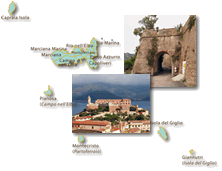
The destiny and fortunes of Elba Island have always been tied to the abundant mineral deposits that attracted traders and travellers to these coasts since antiquity. Moreover, the island constitutes a microcosm that combines the variety of natural environments with a heterogeneous historical-artistic heritage, testimony of the numerous dominations that have concerned these lands.
The role of Portoferraio as an old Medicean grand-ducal outpost on the island survives in the imposing sixteenth-century defensive system consisting of three forts and a curtain wall, called "of attack" or "of land".
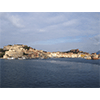
In 1548, on the remains of the Roman Fabricia and the Medieval Ferraia (so called for being an important dock for the island’s iron mines), Cosimo I de’ Medici promoted the foundation of Portoferraio, thus marking a significant moment in the realisation of the regional state. "Cosmopolis", as the "city of Cosimo" was sometimes called or "Cosmo", from the allusion the Duke made to his name, was a point of reference in treatises dedicated to the criteria of constructing cities. It was indeed considered an excellent example of city-fortress in the Cosmografia Universalis by geographer Sebastiano Münster. In a letter to the Viceroy of Naples, dated April 16, 1548, Cosimo underlines the military and strategic character of the port: «The port of Elva … is of such importance that if it were occupied by a power desirous of troubling the affairs of Italy, it would find the easiest way to do as it pleases, for that site is strong by nature; the port capacious of any great armada and the site itself are near many places where damage could be done» (Historical Archive of Florence, Medici Archive of the Principality, File 11, c. 52). Sited behind a promontory, the port has a deep cove and a natural dock, defended by unassailable fortifications, which were built in the mid 16th century by military architects Giovan Battista Belluzzi and Giovanni Camerini. The defensive system was made up of a berthing front towards the west and three principal strongholds (Forte Falcone, Forte Stella and Fortezza della Linguella), interconnected by a system of bastions and walkways, so as to surround the entire surface area of the old city, at one time separated from the rest of the island by a manmade trench. The octagonal tower of Linguella, built at the mouth of the dock, is today the venue of the local Archaeological Museum, while Forte Stella houses one of the oldest lighthouses in Europe, built by Grand Duke Leopold of Lorraine in 1788.
The port also performed a leading role in the mining activities of the island, constituting one of the most important landing places for trading and transporting iron from the mines of Elba to the processing plants at Follonica. Furthermore, during the Lorraine period, numerous salterns were established in the port roadstead, which guaranteed one of the most important production activities of the Grand Duchy. In 1829, from these saline waters, chemist G.B. Pandolfini-Barbieri obtained a quantity of magnesium sulphate identical to that of Epsom salts.
Still today, it is possible to admire the Medici dock and the extraordinary defensive systems, which constitute a rare example of sixteenth-century maritime fortification.
(Graziano Magrini)
Following the road towards Rio nell’Elba, well worth a visit on SP26 are the remains of the Roman Villa delle Grotte, famous for its complex water system.
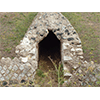
On the promontory that bounds the Gulf of Portoferraio on the southeast, rise the remains of an ancient Roman villa that can be dated between the 1st century B.C. and the 1st century A.D. Partially destroyed to make room for artillery batteries during the conflicts between France and the Kingdom of Naples from 1799 to 1801, the villa still exerts a strong attraction also for the spectacular scenographic backdrop. The surviving structures reveal an original plan in opus reticulatum (small pyramidal tufa blocks laid in cement and arranged with the base facing outward, so as to form a reticulation) with a great visual impact, thanks to the alternation of red tiles, grey calcareous stones and green ophiolite.
Built in part on manmade substructions, the inhabited nucleus of the villa developed along a central axis formed by a large rectangular-shaped pool. Receiving water from a cistern sited above, the pool was bounded on three sides by a large space which must have been a garden. The conduit that crosses the basin lengthwise and stretches to the underlying terrace with a nymphaeum is still well-preserved. A small granite pier found in the promontory cove must have served as a berth for approaching the villa from the sea.
The remains of a baths quarter with frigidarium and calidarium date to a later period. Equipped with a double floor and suspensurae (terracotta pillarets supporting the floor to permit hot air to circulate beneath), according to excavation finds, in the middle of the calidarium there was a marble basin supported by a pillaret for cold ablutions.
(Elena Fani)
Continuing along SP28 towards Rio nell’Elba, a few kilometres ahead lies the Ottone Garden, abounding in exotic plants which have been acclimatised here as of the early 18th century.
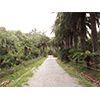
The "Ottone" Garden was born in 1910 by initiative of Giuseppe Garbari, a wealthy landowner from Trent who purchased a large tract of land to cultivate exotic species. Located some 400 metres from the sea, the land is in the vicinity of Giorgio Roster’s "Ottonella" Garden. It was probably Roster himself who convinced his friend to create a new acclimatization garden. In 1913, "Ottone" Garden already had 36 different species of palm. At Roster’s death (January 17, 1927), Garbari sold the garden. The successive owners have substantially respected the original layout.
Renovated in 1986-1987, the garden is subdivided into 8 sectors, in respect of the original layout. It occupies a surface area of approximately 2 hectares, and a card illustrates every plant. With its exotic plants and rare palm trees, "Ottone" is today the best private acclimatization garden in Tuscany.
(Graziano Magrini)
Dedicated instead to the flora diversities of the Tuscan Archipelago, the Orto dei Semplici Elbano extends over the slopes of Mount Serra, in the vicinity of Rio nell’Elba.
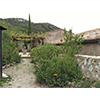
Set in a considerably prized natural environment next to the Santa Caterina Hermitage, an age-old site of meditation and prayer that probably dates to the Romanesque period, the Elba herb garden was largely altered in 1634. Instituted in 1997 by initiative of writer and photographer Hans Georg Berger, with the collaboration of Gabriella Corsi and Fabio Garbari of the University of Pisa, the Garden purposes to study the biodiversity of the flora of the Tuscan archipelago. The various species are identified by cards that offer detailed information on their characteristics and use, in medicine and nutrition, practised by the local populations. The Department of Botanical Sciences of the University of Pisa works with the Garden to increase the collection of autochthonous plants.
(Graziano Magrini)
Only a few kilometres of SP26 lie between the town and Rio Marina, location of the Mining Park of Elba Island which offers a complete cross-section of the island’s centuries-old mining activity.
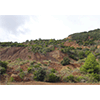
«Elba Island could rightly be considered the richest mineralogical laboratory of Tuscany. This is the site where it seems nature has assembled astonishing phenomena in a small diameter, and constantly summons her scholars, enticed and driven … by her wealth of mines, and the varied precious crystallisations of the many minerals that lump together in these rocks and unite in beautiful forms»: so wrote Emanuaele Repetti in his Dizionario Geografico Fisico Storico della Toscana.
From the iron mine of Rio nell’Elba, which has the most consistent vein of the entire island, to that of Rio Marina, from the mine of Rio Terranera to that of Punta Calamita di Capoliveri, the quarries of Elba are rich in iron and other minerals, as well as large quantities of magnetite, along with marble and granite.
The Museums scattered throughout the territory dedicated to mineralogy and mining activity propose many specimens of the island’s stones, preserve exclusive documents, and exhibit photographic material of fields of the early 20th century. In the 1980s, the discontinuation of mining activities gave rise to the slow reconversion of mining areas into tourist destinations, maintaining many peculiarities of the territory unaltered, however. History, culture and tradition perfectly complement each other in the proposal that the Mineral Park of Elba Island offers its visitors.
In 2001, Museo dei Minerali dell'Elba e dell'Arte Mineraria was founded, the integrating element of the Park. Housed in the eighteenth-century Palazzo del Burò, formerly headquarters of the Mines Administration, the Museum exhibits samples of Elban minerals in an environment that recreates the blacksmith’s workshop with original tools and materials found in the abandoned mine fields, and photographic documentation on the old mines of Rio and Capoliveri. The Mineral Park Society also manages the Gennai Tonietti Collection, previously exhibited in the Town Hall of Rio Marina. Finally, one can visit the life-size reconstructions of a shelter for miners and a tunnel, made using material recovered in the abandoned mines. On established days and at set times, guided tours to the open-air mine of Rio start out from the Museum.
(Laura Manetti)
Travelling SP26 towards Capoliveri, you reach the picturesque sea village of Porto Azzurro, dominated by the Longone Fortress, a splendid example of mid seventeenth-century Spanish military architecture.
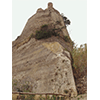
Built by order of Phillip III of Spain on a plan by Don Garcia of Toledo, it was part of the system to control the sea routes of the State of Presidi (founded by the Spanish in 1557). The imposing San Giacomo di Longone Fortress has a star-shaped plan and dominates one of the extremities of the gulf of Mola, opposite the stretch of sea of Porto Azzurro (originally Longone, and from 1863 to 1947, Porto Longone). The fortress is today a penitentiary and can therefore not be visited. However, a spectacular itinerary has been outfitted around a part of the fortress, enabling the visitor to appreciate its enormous bulk and, at the same time, to enjoy a stupendous view of the gulf. The defensive layout of the gulf of Mola is completed by Forte Focardo, a Spanish fortress built in the second half of the 17th century on the opposite side of the gulf, on the territory of Capolivieri.
(Graziano Magrini)
Once you have reached Capoliveri, we advise you visit the Museo dei Minerali Elbani "Alfeo Ricci", which preserves an almost complete collection of the minerals found on Elba Island.
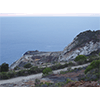
The Commune of Capoliveri set up a mineral museum in 2002, thanks to the collection begun by Alfeo Ricci in the 1930s and developed by his heirs, which was previously housed in Rio nell’Elba. By means of the many samples from the iron mining areas of eastern Elba and from the pegmatite veins of Mount Capanne, several of them particularly rare, the set up documents the island like a sort of open-air mineralogical museum.
(Mara Miniati)
****************************
Texts by Elena Fani
English translation by Victor Beard
Last update 04/gen/2008



 = libraries and archives
= libraries and archives  = scientific research centers
= scientific research centers  = memorial places of scientists
= memorial places of scientists = public health places
= public health places = places of science and worship
= places of science and worship = places of technology
= places of technology  = museums and collections
= museums and collections  = villas and gardens of science
= villas and gardens of science


